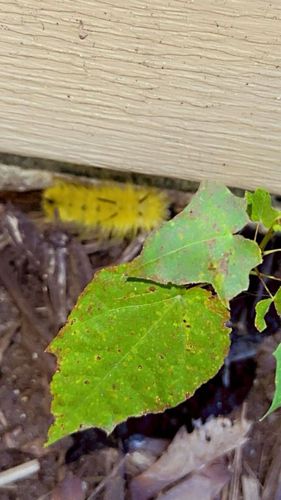American Dagger Moth Caterpillar
Scientific Name: Acronicta americana
Order & Family: Lepidoptera (Moths and Butterflies), Noctuidae (Owlet Moths)
Size: Larvae (caterpillars) typically grow up to 2 inches (5 cm) in length.

Natural Habitat
Forests, woodlands, suburban areas, and orchards where their host trees (maple, oak, elm, willow, birch, etc.) are present.
Diet & Feeding
The caterpillars are herbivores, primarily feeding on the leaves of deciduous trees such as maples, oaks, elms, birches, willows, and ashes.
Behavior Patterns
These caterpillars are solitary feeders. They are most commonly seen in late summer and fall before they pupate. When disturbed, they may curl up or thrash their bodies. The adult moths are nocturnal.
Risks & Benefits
Potential Risks: The hairs (setae) on the caterpillar can cause skin irritation, itching, or a rash in some sensitive individuals if touched, due to mild venom or irritation on the spines. Potential Benefits: As herbivores, they are part of the food chain, serving as a food source for birds and other insectivores. They can also contribute to nutrient cycling through defoliation of trees, although usually not to a damaging extent for healthy trees.
Identified on: 9/30/2025